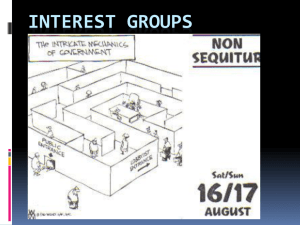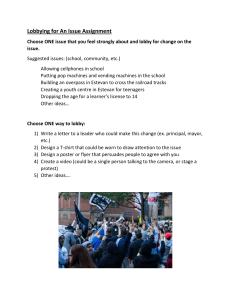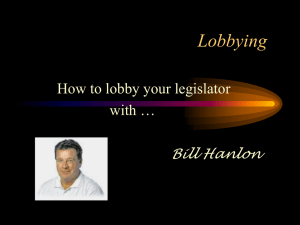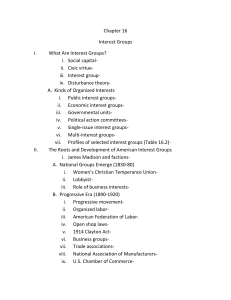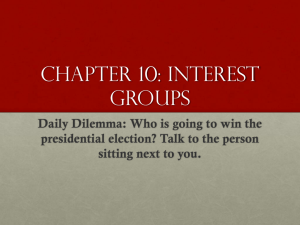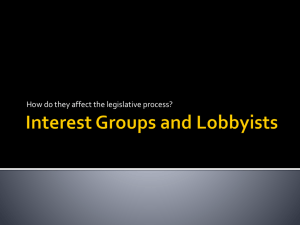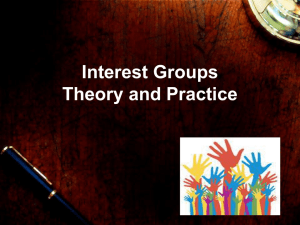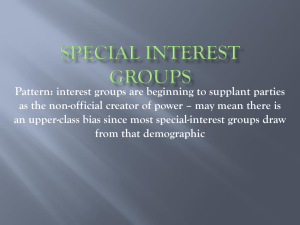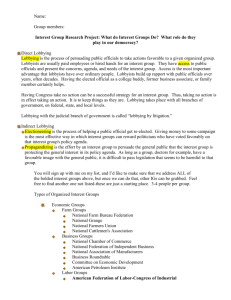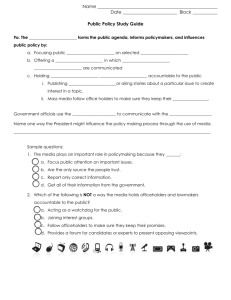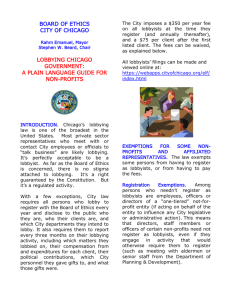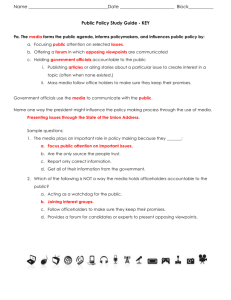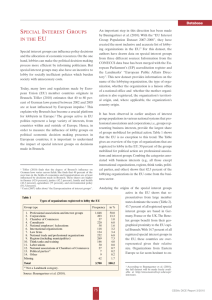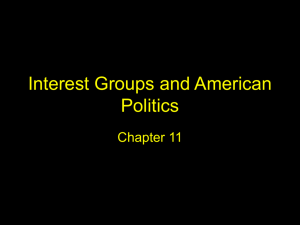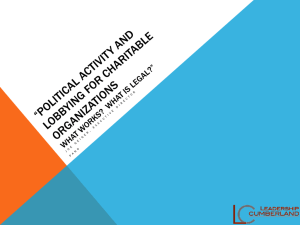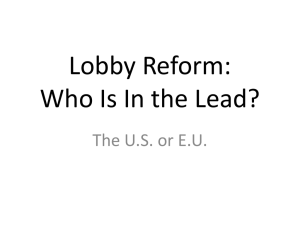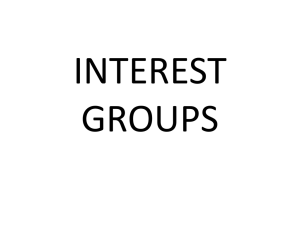Intro to Interest Groups
advertisement
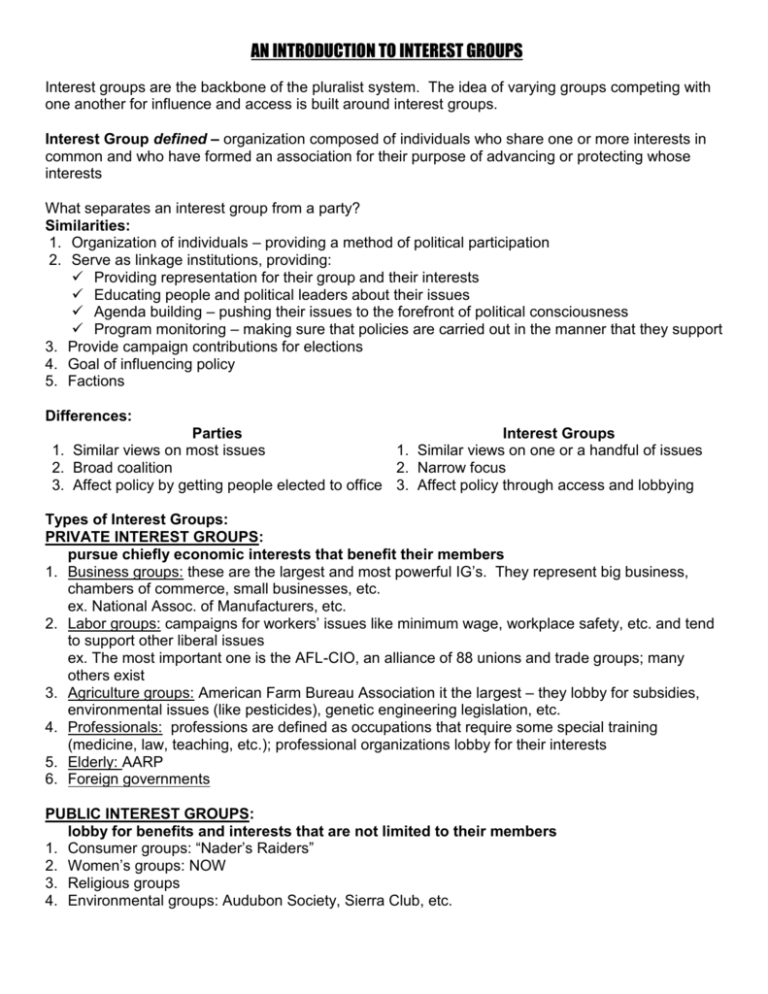
AN INTRODUCTION TO INTEREST GROUPS Interest groups are the backbone of the pluralist system. The idea of varying groups competing with one another for influence and access is built around interest groups. Interest Group defined – organization composed of individuals who share one or more interests in common and who have formed an association for their purpose of advancing or protecting whose interests What separates an interest group from a party? Similarities: 1. Organization of individuals – providing a method of political participation 2. Serve as linkage institutions, providing: Providing representation for their group and their interests Educating people and political leaders about their issues Agenda building – pushing their issues to the forefront of political consciousness Program monitoring – making sure that policies are carried out in the manner that they support 3. Provide campaign contributions for elections 4. Goal of influencing policy 5. Factions Differences: Parties Interest Groups 1. Similar views on most issues 1. Similar views on one or a handful of issues 2. Broad coalition 2. Narrow focus 3. Affect policy by getting people elected to office 3. Affect policy through access and lobbying Types of Interest Groups: PRIVATE INTEREST GROUPS: pursue chiefly economic interests that benefit their members 1. Business groups: these are the largest and most powerful IG’s. They represent big business, chambers of commerce, small businesses, etc. ex. National Assoc. of Manufacturers, etc. 2. Labor groups: campaigns for workers’ issues like minimum wage, workplace safety, etc. and tend to support other liberal issues ex. The most important one is the AFL-CIO, an alliance of 88 unions and trade groups; many others exist 3. Agriculture groups: American Farm Bureau Association it the largest – they lobby for subsidies, environmental issues (like pesticides), genetic engineering legislation, etc. 4. Professionals: professions are defined as occupations that require some special training (medicine, law, teaching, etc.); professional organizations lobby for their interests 5. Elderly: AARP 6. Foreign governments PUBLIC INTEREST GROUPS: lobby for benefits and interests that are not limited to their members 1. Consumer groups: “Nader’s Raiders” 2. Women’s groups: NOW 3. Religious groups 4. Environmental groups: Audubon Society, Sierra Club, etc. SINGLE ISSUE GROUPS: look at a single issue that they want to change (ISSUES AND EXAMPLES ?) Gun Control: NRA Abortion: Operation Rescue, Planned Parenthood Civil Rights: NAACP, LULAC, etc. Methods Used by Interest Groups: DIRECT LOBBYING: 1. Making personal contacts – meeting with policymakers and doing what they can to persuade them to support their cause 2. Providing expertise – using their specialized body of knowledge about a certain topic to aid in writing legislation 3. Testifying at hearings: providing information for Congressional hearings allows them to get the message out and usually get some free publicity 4. Giving money 5. Lobbying the bureaucracy – once the law is passed, they try to get the law enforced in a way that benefits them 6. Lobbying the courts: filing law suits and friend of the court briefs to influence judges in civil cases that involve topics that affect them INDIRECT LOBBYING: 1. Mobilizing the grass roots – letter campaigns, phone campaigns – getting members to act on their own representatives/Senators 2. Molding public opinion – ads, rallies, rating governmental leaders so their members know to support or not support them 3. Coalition building – bringing people together that are like minded, even if they are not of the same party; banding together with other interest groups GREAT EXAMPLE: the Daylight Savings Time Coalition – lobbyists from 7-11, Kingsford charcoal, amusement parks, lawn and garden centers, meat producers banded together to lobby Congress to extend daylight savings time THE IRON TRIANGLE One of the most important concepts in the functioning of interest groups and the way government works The major complaints against the Iron Triangle are: 1. It provides too much influence for special interests 2. It provides a revolving door for members of Congress and Bureaucracy, who leave government to use their influence to make more money as lobbyists

